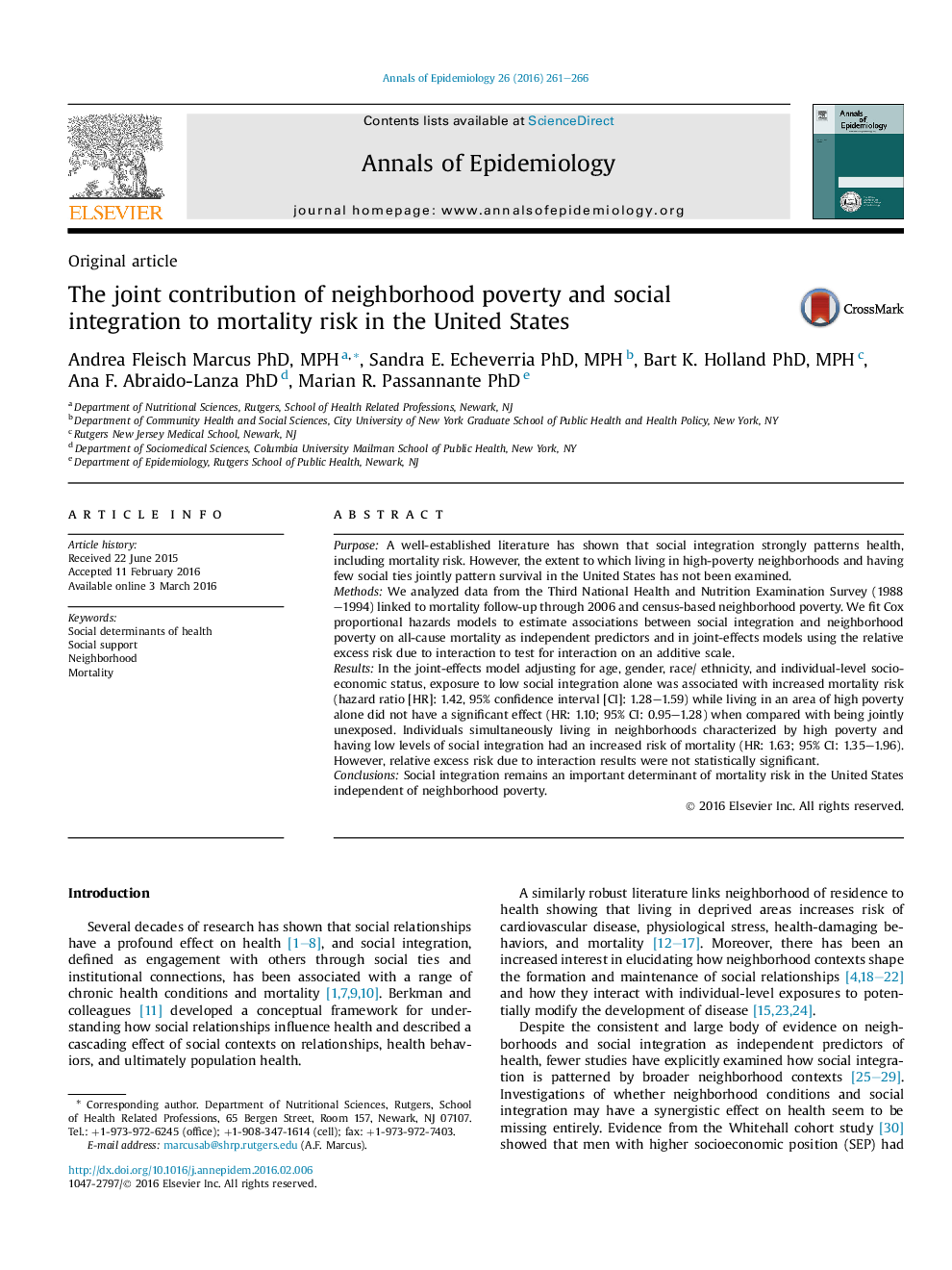| کد مقاله | کد نشریه | سال انتشار | مقاله انگلیسی | نسخه تمام متن |
|---|---|---|---|---|
| 3443676 | 1595232 | 2016 | 6 صفحه PDF | دانلود رایگان |
PurposeA well-established literature has shown that social integration strongly patterns health, including mortality risk. However, the extent to which living in high-poverty neighborhoods and having few social ties jointly pattern survival in the United States has not been examined.MethodsWe analyzed data from the Third National Health and Nutrition Examination Survey (1988–1994) linked to mortality follow-up through 2006 and census-based neighborhood poverty. We fit Cox proportional hazards models to estimate associations between social integration and neighborhood poverty on all-cause mortality as independent predictors and in joint-effects models using the relative excess risk due to interaction to test for interaction on an additive scale.ResultsIn the joint-effects model adjusting for age, gender, race/ ethnicity, and individual-level socioeconomic status, exposure to low social integration alone was associated with increased mortality risk (hazard ratio [HR]: 1.42, 95% confidence interval [CI]: 1.28–1.59) while living in an area of high poverty alone did not have a significant effect (HR: 1.10; 95% CI: 0.95–1.28) when compared with being jointly unexposed. Individuals simultaneously living in neighborhoods characterized by high poverty and having low levels of social integration had an increased risk of mortality (HR: 1.63; 95% CI: 1.35–1.96). However, relative excess risk due to interaction results were not statistically significant.ConclusionsSocial integration remains an important determinant of mortality risk in the United States independent of neighborhood poverty.
Journal: Annals of Epidemiology - Volume 26, Issue 4, April 2016, Pages 261–266
